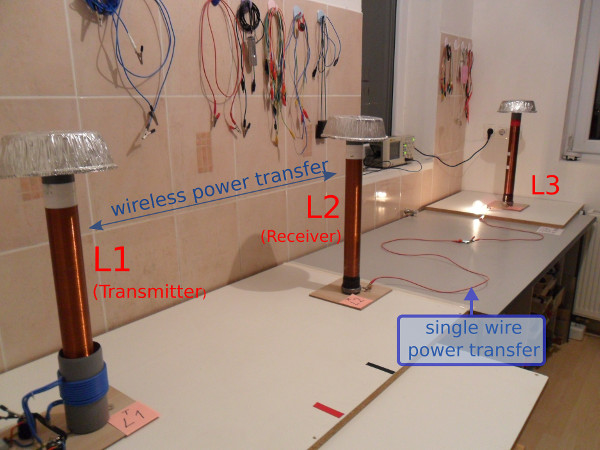DC 12V Mini DIY Tesla Coil Kit Arc Wireless Electric Power Transmission Circuit Diagram
DC 12V Mini DIY Tesla Coil Kit Arc Wireless Electric Power Transmission Circuit Diagram Easy Tesla Coil!: Wireless electricity is here! From wirelessly powered lighting to wireless chargers and even wireless smart homes, wireless transmission of power is an emerging technology with innumerable applications. This is the world's simplest and easiest Tesla Coil circuit design! With just a few simple parts you'll be creating your

#MiniIdeas #Tesla #Coil How To Make A Mini Tesla Coil At Home | Wireless Power Transfer Science Project DIY | DIY Tesla CoilVideo URL : htt The power of the Tesla coil lies in a process called electromagnetic induction, i.e., a changing magnetic field creates an electric potential that compels current to flow. Conversely, the flowing electric current generates a magnetic field. Either way we can honor the great inventor's namesake by putting together a DIY Tesla Coil at home. This coil will be powerful enough to wirelessly light a lightbulb and even create mini lightening bolts that spark from the surface. CAUTION: Do not use this project near persons with pacemakers, sensitive electronics or flammable materials.

Wireless Power Transmission: How to Make a Tesla Coil Circuit Diagram
Introduction. Nikola tesla originally invented the tesla coil in 1891, Ever since then wireless power has become a reality.It's not really used in homes or industrial factories or power plants, but it is a invention electrical engineers use to demonstrate electricity traveling through thin air. tesla coils can power fluorescent bulbs and tubes, and neon blubs all wirelessly. they also create

This fascinating invention, attributed to Nikola Tesla, is often used for wireless power transfer demonstrations and lighting fluorescent bulbs without physical connections. In this article, we will explore the design process of a mini Tesla coil, covering its components, circuit details, PCB design, and the testing procedure. Connect Components: Connect the primary coil and capacitor in a loop using insulated wire.Include a spark gap, which can be made from two metal bolts separated slightly to create a gap for the electrical arc. Link Secondary Coil: Position the secondary coil directly above the primary coil but ensure they don't touch.Connect the bottom of the secondary coil to the main circuit. Power On the Coil: Flip the switch to power on the Tesla coil. You should hear a faint humming sound if the coil is functioning properly. Check for Wireless Power Transfer: To test the wireless power transfer, bring a small fluorescent bulb or a neon light near the secondary coil. The bulb should light up when it is in close proximity to the
